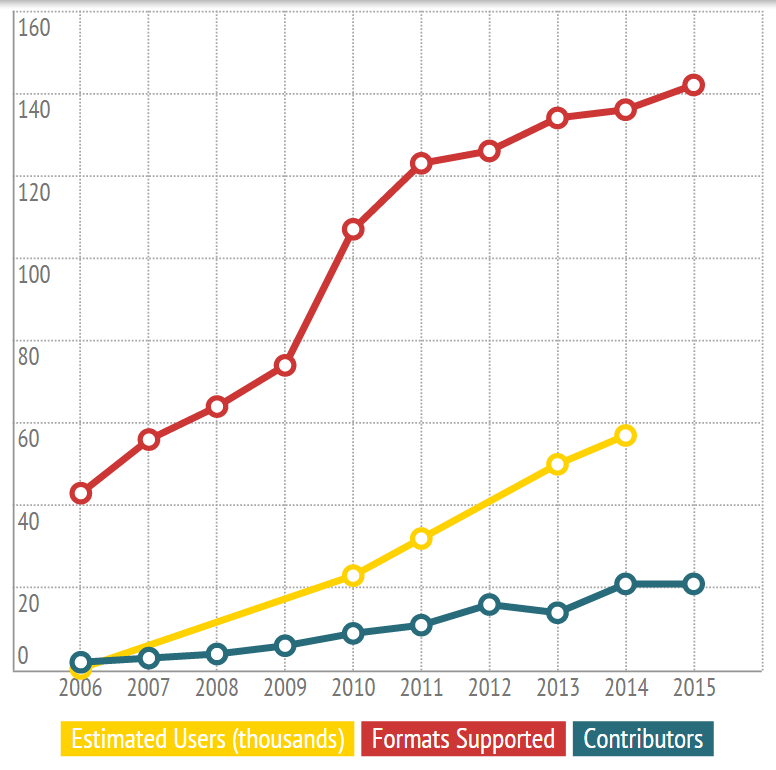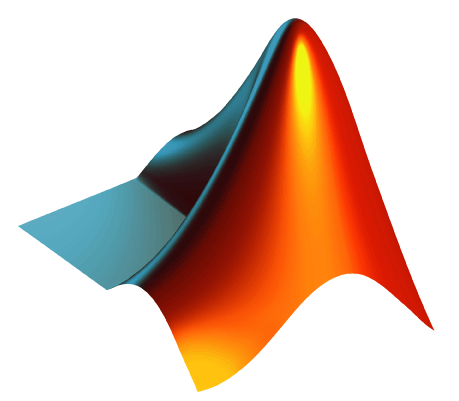OME Bio-Formats
10 years of proprietary image data
Melissa Linkert
Open Microscopy Environment & Glencoe Software
What is Bio-Formats?
- Java library for reading image-based datasets
- Reads images, but also acquisition metadata
- One API, many applications
- ImageJ
- MATLAB
- ...and others
- A complete implementation of OME-XML and OME-TIFF
- also now in C++
A brief historical overview
- 2005 - work began on Java library
- 2006 March 31 - first official release of Bio-Formats
- late 2006 - OMERO begins using Bio-Formats
- early 2008 - MATLAB first supported
- 2008 - major effort standardize metadata handling
- 2009 (v4.0.0) - unified version numbers with OMERO
- 2012 - major effort to improve automated testing
- late 2012/early 2013 - work began on C++ library
- 2014/2015 - major effort to improve performance
- 2015 - increasing number of contributed code changes
- mid-2015 - faster release cycle
The history in numbers

What can you do now?
Read images and metadata across many domains...
- light microscopy
- electron microscopy
- medical imaging (CT, PET, ...)
- high content screening (HCS)
- digital pathology/whole slide imaging (WSI)
- Fluorescence-lifetime imaging microscopy (FLIM)
- Light sheet fluorescence microscopy (LSFM)
...and in many different applications
ImageJ macro:
run("Bio-Formats Macro Extensions");
Ext.setId("/PATH/TO/FILE");
Ext.getImageCount(imageCount);
timestamps = newArray(imageCount);
for (plane=0; plane < imageCount; plane++) {
Ext.openImage("image #" + plane, plane);
Ext.getPlaneTimingDeltaT(timestamps[plane], plane);
}

MATLAB:
r = bfGetReader("/PATH/TO/FILE");
imageCount = r.getImageCount();
omeMetadata = r.getMetadataStore();
for plane = 1:imageCount
image = bfGetPlane(r, plane, varargin{:});
timestamp = omeMetadata.getPlaneDeltaT(0, plane - 1).value().doubleValue();
end

Java:
ImageReader reader = new ImageReader();
IMetadata omeMetadata = MetadataTools.createOMEXMLMetadata();
reader.setMetadataStore(omeMetadata);
reader.setId("/PATH/TO/FILE");
for (int plane = 0; plane < reader.getImageCount(); plane++) {
byte[] image = reader.openBytes(plane);
Number timestamp = omeMetadata.getPlaneDeltaT(0, plane).value();
}

What we've done recently
- full support for Windows
- performance improvements, especially over network file systems
- added units for most metadata values
- approx. 130 bug fixes in 2015
What's next?
- Updates to the development process
- More releases, and faster
- ...but without compromising quality
- Updated ROI model
- More usage examples and developer documentation
- Feedback welcome!